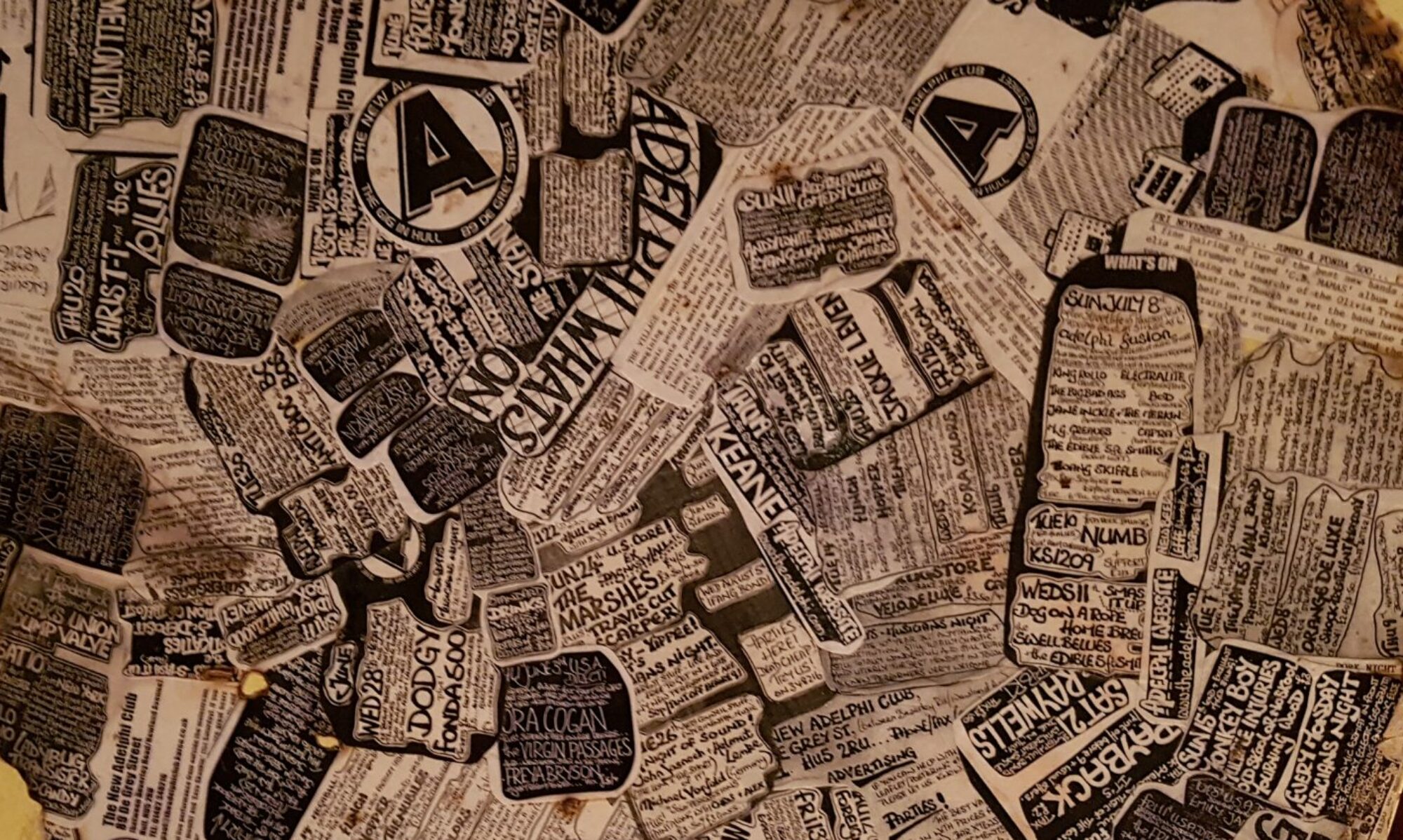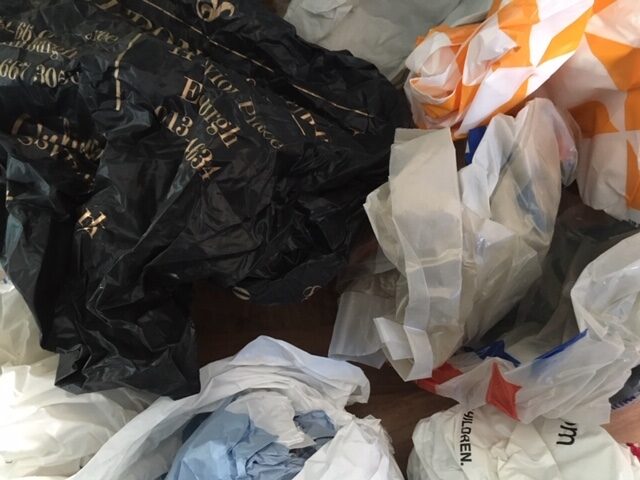To misquote Wham, last Christmas I had a weird email exchange. I shouldn’t have even been checking my work email but there was a lull between my morning Toblerone and War Games starting on ITV4. More out of muscle memory than anything else, I flicked outlook open on my phone. Among a metric ton of marketing emails from Bloomsbury, the London Review of Books and someone keen on flogging me bitcoin (still not sure what that is) was a real message from a human being. ‘Hi’, it said, ‘saw your tweet yesterday and wondered if you were free to talk on our drive time show about the legacy of Vaughan Oliver and 4AD Records. About five minutes should do it’. Odd, right? Five minutes to cover the legacy of one of the greatest (maybe THE greatest) sleeve designers of my lifetime and the sprawling and strange magnificence of the label itself. All of this on a crappy commercial (and politically suspect) radio station. As that little bald bloke from The Princess Bride (on after War Games) might exclaim, ‘inconceivable!’
I didn’t do it. I read the email too late. I’m glad. It would not have been a success.
I should back up a little here.
The day before this, 29th December 2019 to be precise, Vaughan Oliver died. Oliver and his graphic design studios Envelope 23 and v23 were responsible for nearly four decades of surrealist sleeve design for that totem of indie cool, 4AD. Their musical output is unthinkable without these designs. The ethereal sounds created by Robin Guthrie’s guitar and Liz Fraser’s voice find their visual plane in the watery depths that adorn Cocteau Twins LPs and 12-inches. Black Francis’ sexual rage and Joey Santiago’s B-movie guitar licks seem to be written especially for the mysterious naked figure on the sleeve of Pixies’ Surfa Rosa. Lush’s discordant jangles and spikes find a new dimension through the clashing fractals on Scar and Spooky. To hear these records is to see this art. This is music that is mysterious and evades clarity. It sits alongside a visual mode that is unsettling and uncanny. Images that are new yet familiar and songs that are delicate yet overpowering. All of these oppositions sit at the heart of the 4AD aesthetic.
That paragraph took me over an hour to write (and several more to fiddle with) and is the sort of thing I would have hoped to say on the radio. Art this complex resists simple sound bites. You need to take your time to think about what it means to you. I’ve had 30-odd years to practice and I’m still only half a percent sure.
But, hearing the sad news on this day, I tried to say it all in 280 inadequate words. Deaths and other assorted challenges are a chance to stick my digital oar in. Famous musician dies? ‘RIP man, here’s some YouTube footage of your early stuff that shows how cool I am.’ Famous DJ dies? ‘RIP dude, here’s a comment that hints at how wrecked on pills I will pretend I was at one of your early sets that I was definitely not at because I was eleven years old at that time.’ Grieving is supposed to be a personal affair; even when it’s a famous person that you’ve never met. Twitter has buggered this up. Now cool and groovy deaths are marked by links to thought pieces in cool and groovy magazines and cool and groovy blogs that just happen to casually mention that the cool and groovy author and the deceased were mates that shared a few cool and groovy private moments that you non-cool and non-groovy plebs will just never understand.
So, on the morning of the 30th December, I expressed my sadness about Vaughan Oliver on Twitter. I did so by engaging with a comment from Lush’s Emma Anderson, an artist in a far better position than me to offer comment on his legacy. It was this that the radio researcher picked up. Even if I had seen the email in time to reply, I would have declined. Contacting me instead of someone who was actually in a 4AD band with Vaughan Oliver designed sleeves is not a great way for a researcher to show off their research.
I was actually trying to have a festive digital detox because the unique poison of a modern general election campaign had taken up most of December. When I should have been tutting at pictures of beardy bellends in Christmas jumpers and monitoring the latest spats about Pogues songs (annual traditions both), I was instead raging at liars and dying inside. The whole tone of Christmas was ruined. Everyone I know felt exhausted and dispirited. It wasn’t so much about a Boris Johnson victory (although that is obviously horrible), more a sense that any dangling remnant of social decency was gone and would never return. This was the new normal and the awful future. I am as culpable as everyone else. I spewed bile online about the BBC (which is odd as I love the old dear – I’ve even got 6Music on as I type this). I expressed outrage about fridges, hospital floors and Andrew Neil’s confusing hair. I actively made the world worse at a time of year when it usually seems that little bit better. Pub time was dominated by politics instead of cracker jokes. Spittle flecked digital hate replaced ‘sleeps ‘til Christmas’ memes and Dickensian Muppet clips.
It was shit and I felt terrible. I needed space from this. I needed a news void and a social media blackout. I needed Christmas shopping, vegetarian roast dinners and lots of telly. It mostly worked and the Christmas week started to feel like recovery.
I heard about Vaughan Oliver on the radio. It was announced solemnly during the news bulletin and discussed in reverential tones by the presenters and a range of guest voices. He was too young and too talented, and it was going to leave a massive hole in indie culture. It’s hard to disagree with any of this. His art and the records it houses are a part of my identity. It shaped me as a teenager. It was a way for a clunky and hopelessly short-sighted boy to communicate cultural capital and make come-get-me eyes at the cool kids. It was the start of a process that still hasn’t ended. It was the beginning of my life as someone who is into record labels.
This is going to take some explaining.
Let’s start fancy and work with some theory (see? Always with the cultural capital…even the term ‘cultural capital’ is cultural capital. A Bourdieu wormhole awaits.). Walter Benjamin’s words help position the record label in the world of art and aesthetic appreciation. In his 1935 essay ‘The Work of Art in the Age of Mechanical Reproduction’, Benjamin speaks of the artwork’s unique status by arguing for the presence of its ‘aura’. The rapid pace of technology in the century that preceded Benjamin’s writing saw art shift from singular and original to multiple and regenerating. Benjamin’s problem is that, ‘even the most perfect reproduction of a work of art is lacking in one element: its presence in time and space, its unique existence at the place where it happens to be’. Technical processes ‘put the copy of the original into situations which would be out of reach for the original itself’. Art in modernity is characterised by the notion that ‘it substitutes a plurality of copies for a unique experience’. Just shy of a decade later, Adorno and Horkenheimer add that ‘the achievement of mass production and standardisation’ is to empower ‘executive authorities not to produce or sanction anything that in any way differs from their own rules, their own ideas about consumers or, above all, themselves’. In this sense the art and commerce become inseparable. To purchase art is to become complicit with the nefarious machinations and ideologies of commodity culture and its proponents. Consuming art even that which purports to be radical and subversive should offer a means of resistance. It turns out, though, that it’s really just acquiescence.
All of this marks a compromise for the ‘serious’ music fan. I am snobby and pretentious when it comes to music (but a big old pleb with other media) and I desire a clear distinction between commodity and artwork. Benjamin and his buddies suggest that this is fantasy. I cannot access music without participating in a process that involves commerce, trade, advertising, and all of the other immovable facets of capitalist process. To enjoy music is to consume. The artistic object (the song) loses its aura as soon as it is recorded. Perhaps you could argue that studio chicanery is the artform too. But even then it is copied, pressed, packaged and distributed. Unless I get a seat in the studio or pinch the mixing desk at the end of the day then I am always miles away from the aura. Like many musos, I see my hobby as somehow superior to shopping or collecting. Music is a higher calling after all. But all of this is an illusion. The fan is duped into spending income on a broken promise. The acts of resistance or outsidership offered by indie connoisseurship are really just an admission that there’s no alternative to the economic systems of our time.
Fuck.
However, there might be a loophole. Perhaps I can work out a way to love records that means something other than mere trend-following or blind, grasping, aspirational consumerism. It’s all thanks to Tony Wilson really. Before I fell in love with 4AD there was Factory. I wasn’t old enough for Joy Division and New Order never really appealed to me. My Factory infatuation started with Shaun William Ryder and the twisted funk of the Madchester Rave On EP. Like loads of kids my age, Thursday November 23rd, 1989 was the moment that the world changed. Top of the Pops featured The Stone Roses and the Happy Mondays (or ‘Happy Monday’ as presenter Jenny Powell introduced them). Yes, Top of the Pops. The weekly crap-fest hosted by Radio 1 deejays and ‘music personalities’ surrounded by grinning 80s blokes in shiny suits and women with extraordinary perm commitment. To be fair, 1989 had slowly got a bit better. Hip house was a regular feature and the electronic underground was starting to chip away at Stock, Aitken and Waterman, MTV behemoths and Cliff fucking Richard. Most weeks would have something a bit interesting even if they finished up with that stupid rabbit and his 60s mega mixes. This episode was different though. I sort of knew what ‘indie’ was but it all looked a bit scary and something of a closed shop. I’d even seen the Mondays’ Wrote For Luck video (the one with a VERY battered Shaun in a club) but still hadn’t really understood. I don’t know what it was about the TOTP appearance that changed everything. Maybe it was guest vocalist Kirsty Macoll’s double denim. It could have been Shaun’s wayward curtains and their resistance to ubiquitous 80s hair spray. It might have even been the fact that I sort of heard the words ‘fill you full of junk’ without having a scooby about what they meant. I’d like to think it was the discordant groove of Hallelujah itself, all scrawling guitar and filthy, lazy bass. Whatever it was I loved it and wanted more. This episode was on a week after my 14th birthday and by my 15th I had stupid big jeans, curtains of my own, a record player, band t-shirts ordered from the NME and even knew some drug slang (mostly thanks to the Shamen and my mate’s big sister).
I think I may have even been developing taste. It’s hard to tell because my school’s violent attitudes to difference (especially when it came to footwear and hairstyles, transgressions met with a variety of violent punishments) had made much of what I did weirdly defensive. But I was starting to find others who were a bit ‘indie’ (or ‘fucking weirdo goths’ according to the hard lads) and we sort of banded together. I knew I liked music that sounded different. I liked chords that didn’t really work together and vocals that either screamed in my face or mumbled away as if they didn’t give a shit. I liked words like ‘jangly’, ‘ethereal’ and ‘fusion’. Expressions like ‘wall of sound’ or the timeless ‘shoe gaze’ made it into our daily fag break chat (one Embassy No. 1 between us obvs.).
Of course, the paradox of getting involved in a subculture is that attempts at marking out your individuality are signified by allegiance to a group. The performance of anti-cool outsidership means breaking rules by adopting new rules. You become a non-conformist through strict conformity. As well as the aforementioned t-shirts and hair experiments, there were the ubiquitous 8-hole DMs which were scuffed just enough (polished was a huge faux pas), some kind of army surplus coat, a zippo lighter and, most importantly of all, every one of your possessions needed to look sort of broken. You would graffiti your pencil case or school bag with band logos and make sure that your clothes had tony burns all over them. Your jacket needed a button missing and your specs needed a sticking plaster holding them together. Most of all, you needed to get the right plastic bag. Yep, that’s right, a plastic bag. This was before fancy tote bags became the norm but smack in the middle of when your pockets were too small for your hanging-about-up-town kit (walkman, tapes, pack of cigs, book, bus fare). You needed a plastic bag. At first, I misread this code. I thought any old bag would do. I went with all sorts; Budgens, Sainsbury’s, plain blue. Basically, any bag lying about at home would do. No. This was wrong. I looked like a bag wanker. You needed a bag that communicated your taste. A bag from a record shop was best. Our Price if you stayed local but one of the Berwick Street or Covent Garden gang if you ventured into the big town. Rough Trade, Sister Ray, Grey Market, Select-a-Disc or the Camden Record and Tape Exchange were top of the tree.
This, to come back to my original point about commerce and art, is where I can make my peace with consumerism. Me, plus the desirable object, equals the aura that Benjamin speaks of. That makes me sound like a wanker. Let me try again. I could (and can) have a unique experience with mass produced art by being alive to my own reaction to it. My reception is an essential bit of the art itself. So, to work this through. My Rough Trade bag contained on most days: my terrible Boots walkman, a compilation tape made by my mate Jim, an actual shop-bought cassette of Bossanova (still my favourite Pixies album – more on this below), Marlboro, swan vestas, some money and the NME. All of these objects interacted with each other and formed my own narrative. I was the sum of these imperfect parts. I smelt a bit of the matches and my hands had ink on them from the music rag. The tapes were in battered cases. All of this was unique. It made me feel unique. It made my relationship with my cultural choices feel unique. Even when I basically looked the same as all of my friends.
So, what does this mean for record labels and their mass produced output? Well, I’m getting there. Hold on a mo. The next step on the cool ladder from knowing the bands was knowing the labels. As I said, I like to think my first label love affair was with Factory but, honestly, that was really just the Mondays and bit of Northside. I wasn’t aware of Tony Wilson’s arch take on Modernism or his willing facsimile of Warholian aesthetics. I just wanted to get fucked with Shaun and Bez and say ‘call the cops’. This was very much band love with a thin pretence of label love added retrospectively. It was the same with Creation. 1991 was quite the year for an indie kid. You had, in the space of twelve months: Bandwagonesque, Screamadellica, Nowhere and Raise. Four LPs that never really age. Four LPs that still make it on to top 100 lists compiled by Guardian journalists younger than my trainers. Four LPs that sound divergent yet capture a moment in British youth culture and are testament to Alan McGee’s tastemaking. But I still wouldn’t have called myself a ‘Creation’ fan. I didn’t know about his love of 60s garage or his particular brand of socialist entrepreneurism or that he was a bit of a dick. I didn’t even know he was Scottish. I wasn’t an Alan McGee fanboy and, given the Oasis horror show later in the decade, I never really would be.
But there was a creeping sense that labels were more than just an anonymous place somewhere (probably in London or Manchester, far away from my suburban ennui) where contracts were signed, music was recorded, and LPs were manufactured (however that happened). I honestly never really thought about the logistics of all this. For all I knew it happened in the same building on the same road. I just liked the bands and I had allegiance to them. I also liked the record shops and I sort of styled myself around the logo on my plastic bag of anti-cool individuality. Five bands changed all of this.


